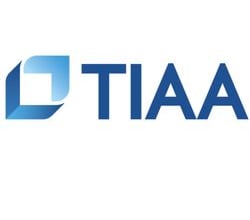Startups are exciting: Five, ten people–all wearing multiple hats and working long hours, with the dream of making their fortunes.
For instance, let’s think about employee relations. Company culture changes as you grow, and expanding globally presents additional challenges.
From minuscule to tiny
When you have a minuscule company with five people, everyone knows everyone else. Frequently, people who join a startup at this level have known each other from previous jobs and know how to interact with one another in a way that fits with the attitudes and comfort levels of these people. You have a good idea of whether these colleagues will think your joke is funny or rude.
But, as you grow, you bring in new people, and you need to set boundaries and clear expectations. You can’t just let your culture grow “organically” because it will run wild. Just like a garden requires weeding, company culture needs specific planning, planting, and removal of the bad things.
The unspoken rules need to be spoken. For instance, your core group of five people understood that flip-flops and shorts were acceptable when working in-house, but if you had a client meeting, everyone put on professional clothes. A new hire sees the flip-flops and doesn’t realize that he’s expected to wear a button-down shirt to meet with clients. That conversation can be awkward if you don’t have it before the new hire has a client meeting.
This is where a good employee relations strategy comes into play. You need clear policies even before you think you do. You need to take initiatives such as starting performance appraisals, implementing a new hire training program and drafting formal job descriptions before expanding your team beyond the initial founders of the organization.
From tiny to small
Fifteen is the magic number of total employees–that’s the federal standard for when many employment laws kick in. Discrimination laws and the Americans with Disabilities Act are two big ones. For some states, these employment laws kick in when the employee count is even lower. Once an organization is subject to these laws, there’s a significant obligation on the employer to ensure they are adhering to the laws.
You can’t laugh off a sexist joke anymore (not that you should have before) because now it puts the company at legal risk. Your need for counseling and coaching can increase because as the team expands, new employees will need support and long-term employees may need assistance with navigating the changes a growing team brings.
Additionally, suppose you filled your company with “idea people” who lack management experience. In that case, you may need to bring in an experienced employee relations person to coach the leadership team on how to lead instead of focusing only on new ideas.
From small to mid-size
As the company reaches 50, the Family Medical Leave Act is applicable. It’s another layer of paperwork mixed with compassion that needs strong employee relations.
With more employees comes an increase in conflict and the need for better communication skills. Leadership continues to be critical. Employee relations need to support people, solve problems, and help plan for the future. And, of course, for smaller organizations, employee relations shouldn’t be a stand-alone function. The HR manager handles just about everything from hiring to coaching to succession planning to government paperwork.
As the organization continues to expand and grow larger, it’s no longer feasible to manage your teams with just a spreadsheet, or to neglect to keep track of your employees at all. Proper documentation tools become essential for consistently tracking employee issues and establishing equitable treatment of all employees. Thorough documentation and consistent processes ensures your organization is adhering to laws and creating a safe work environment.
Going global
Landing in a new country isn’t the same as operating under U.S. culture and law, just with a different language or accent. The rules are different. The social norms are different. For example, in some countries using a boss’s first name is the height of rudeness. That can come as a shock to a relaxed U.S.-based company.
Discrimination laws are another aspect to consider when expanding globally. In the U.S., it’s illegal to consider U.S. citizens ahead of anyone else who has a work permit. In Switzerland, it’s illegal to consider anyone without Swiss or EU citizenship, regardless of their work permit, until you’ve established that there isn’t a Swiss or EU person who can do the job. It can turn company culture on its head.
Time zones can also turn into turf wars. If your business is in California, and you open an office in Ukraine, there’s a 10 hour time difference. Do the Californians have to get up at 5:00 am for a meeting, or do the Ukrainians have to be available at 10:00 pm for a meeting? Someone has to give.
As your company grows, your employee relations needs also grow. As your organization scales, it’s critical to constantly re-evaluate your practices to ensure you’re staying on top of changes and implementing the proper tools to provide the support and data you need to be successful. ER can leverage data and analytics to spot patterns and trends to proactively manage employees instead of waiting for issues to arise and then reacting. This approach not only protects employees, it protects your organization’s brand and reputation.
You have to work together, and good employee relations can help smooth out differences and help people come together for a productive, engaged workforce. And that’s the key to success, regardless of size.




